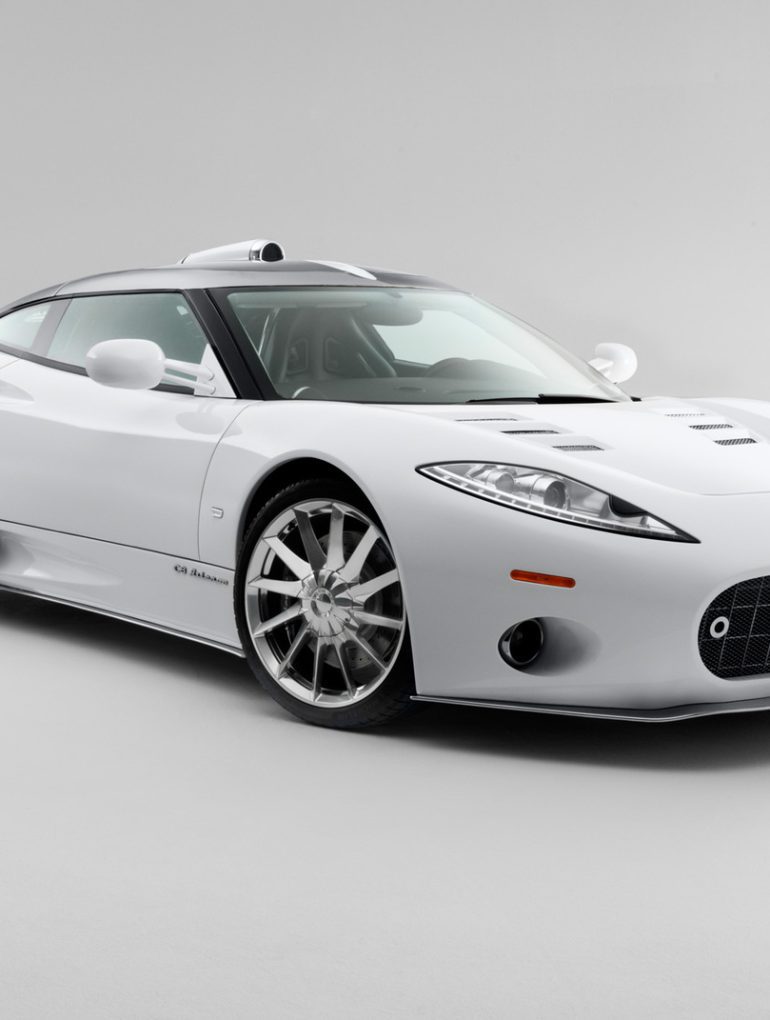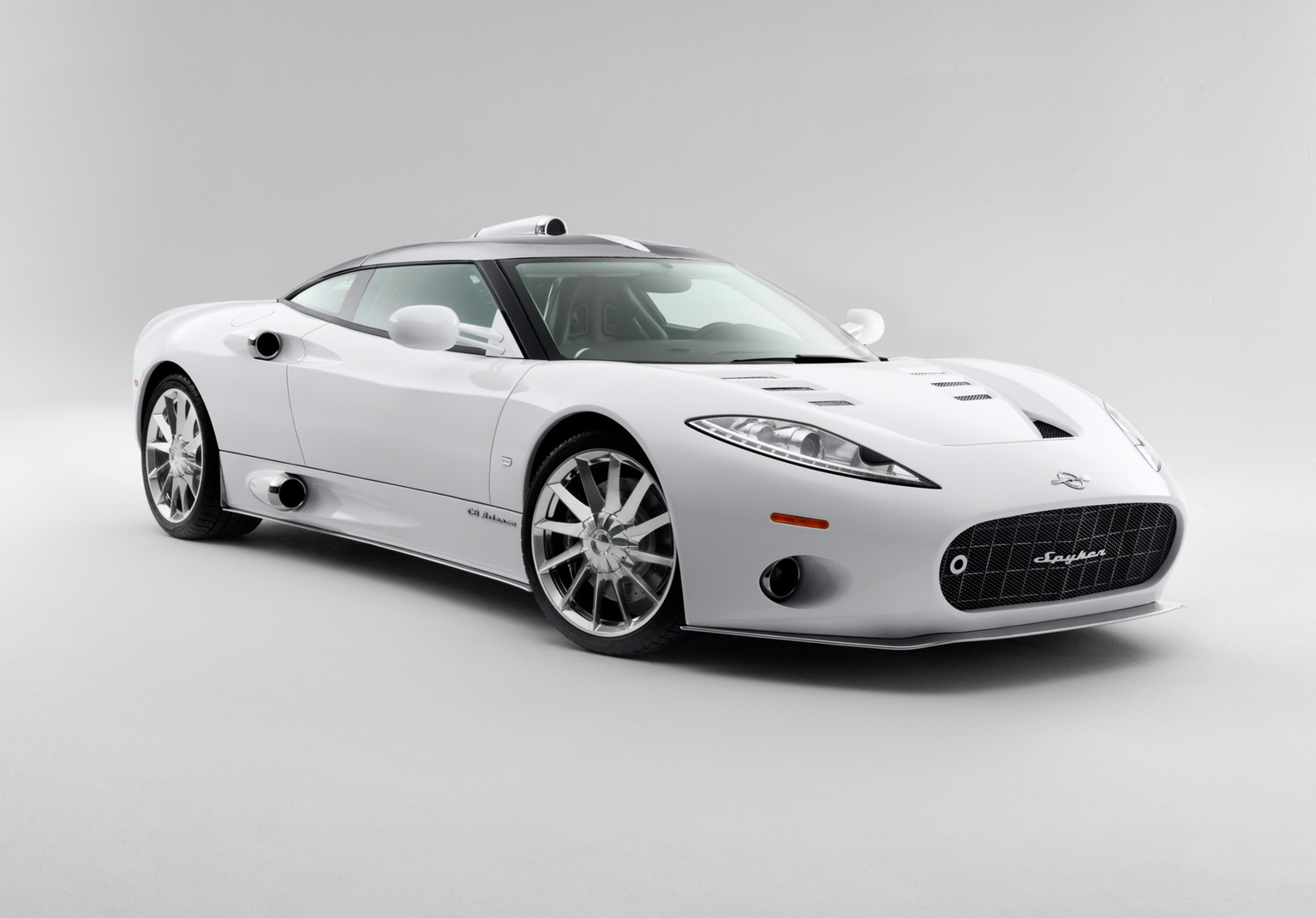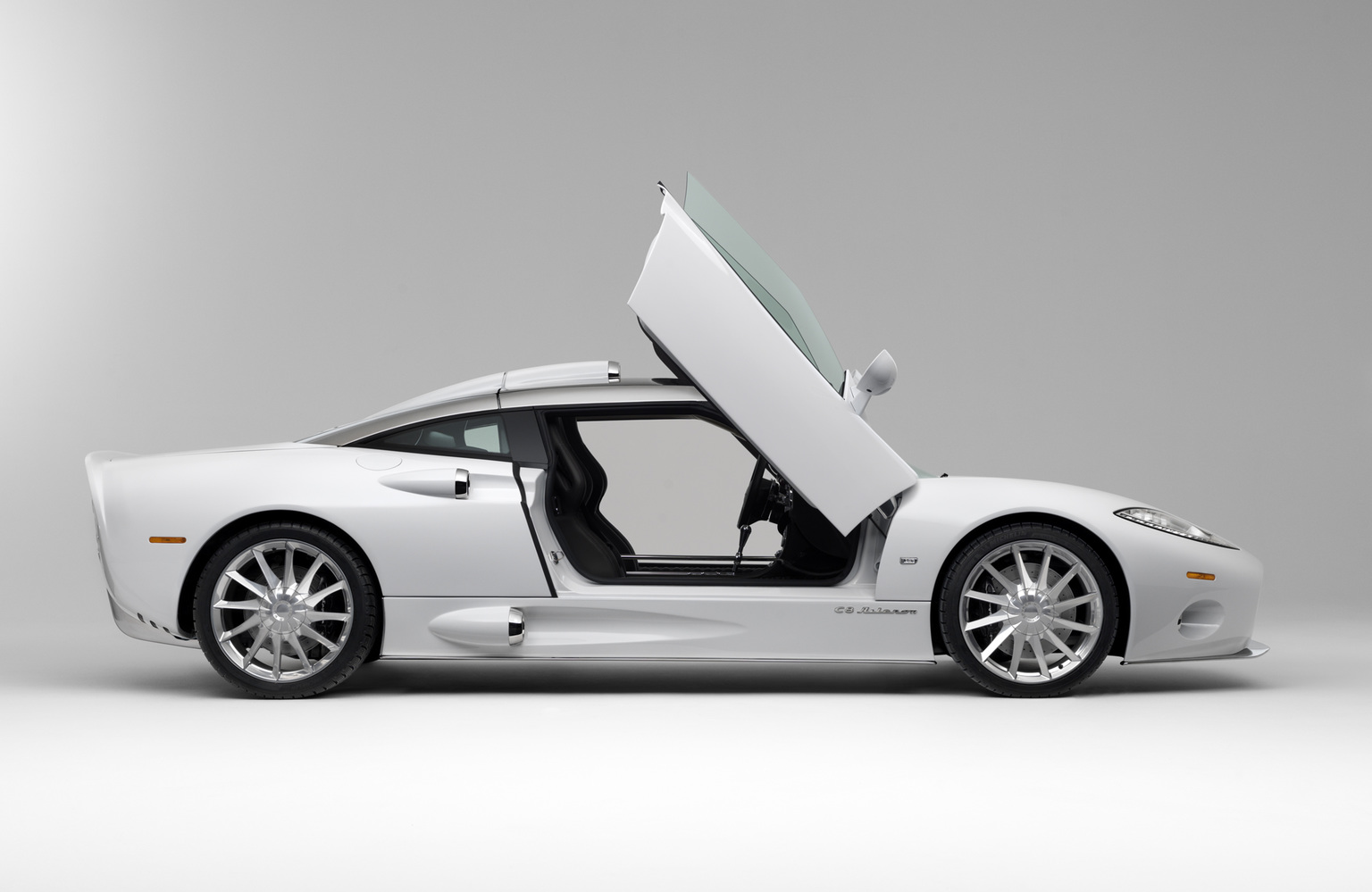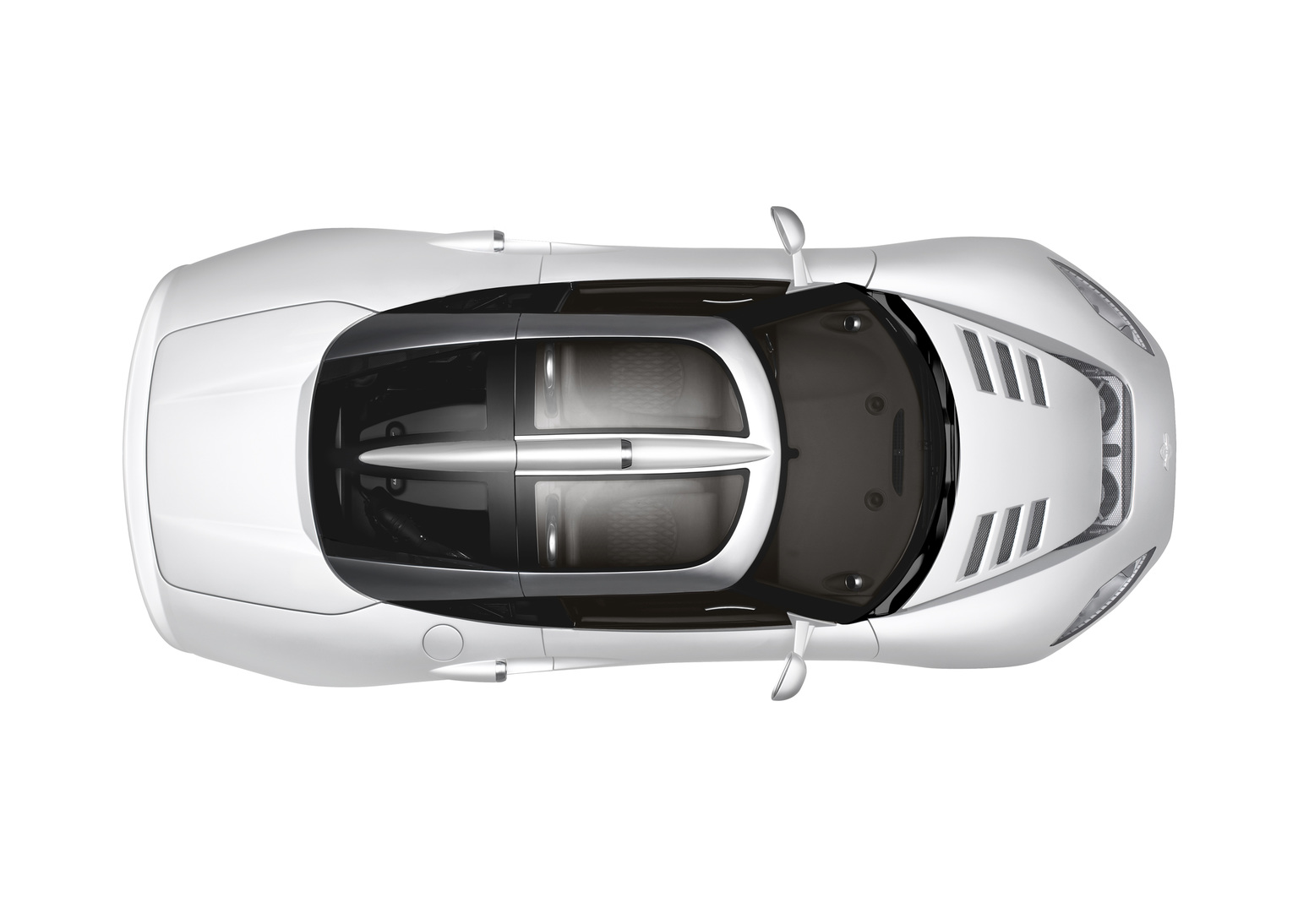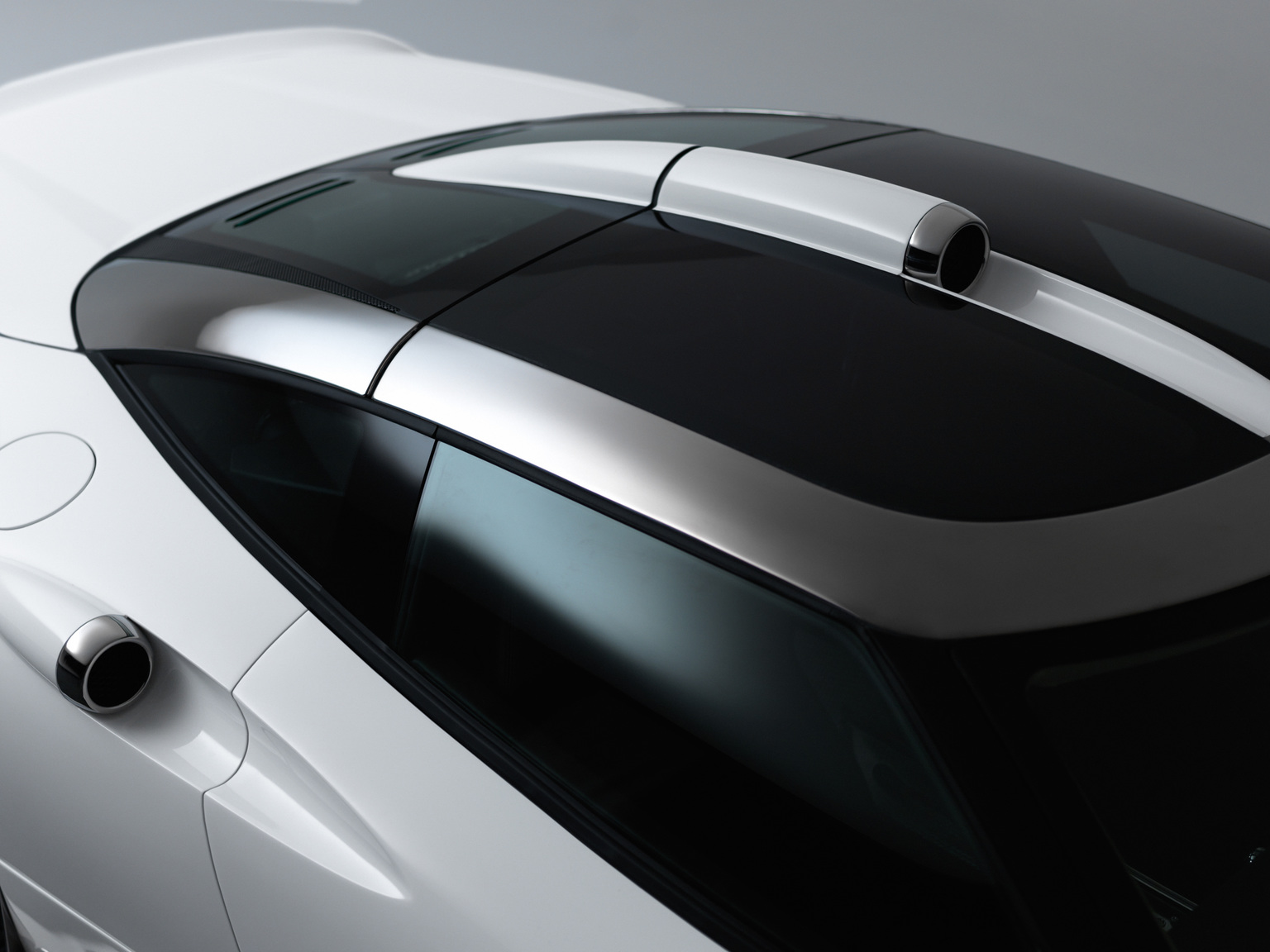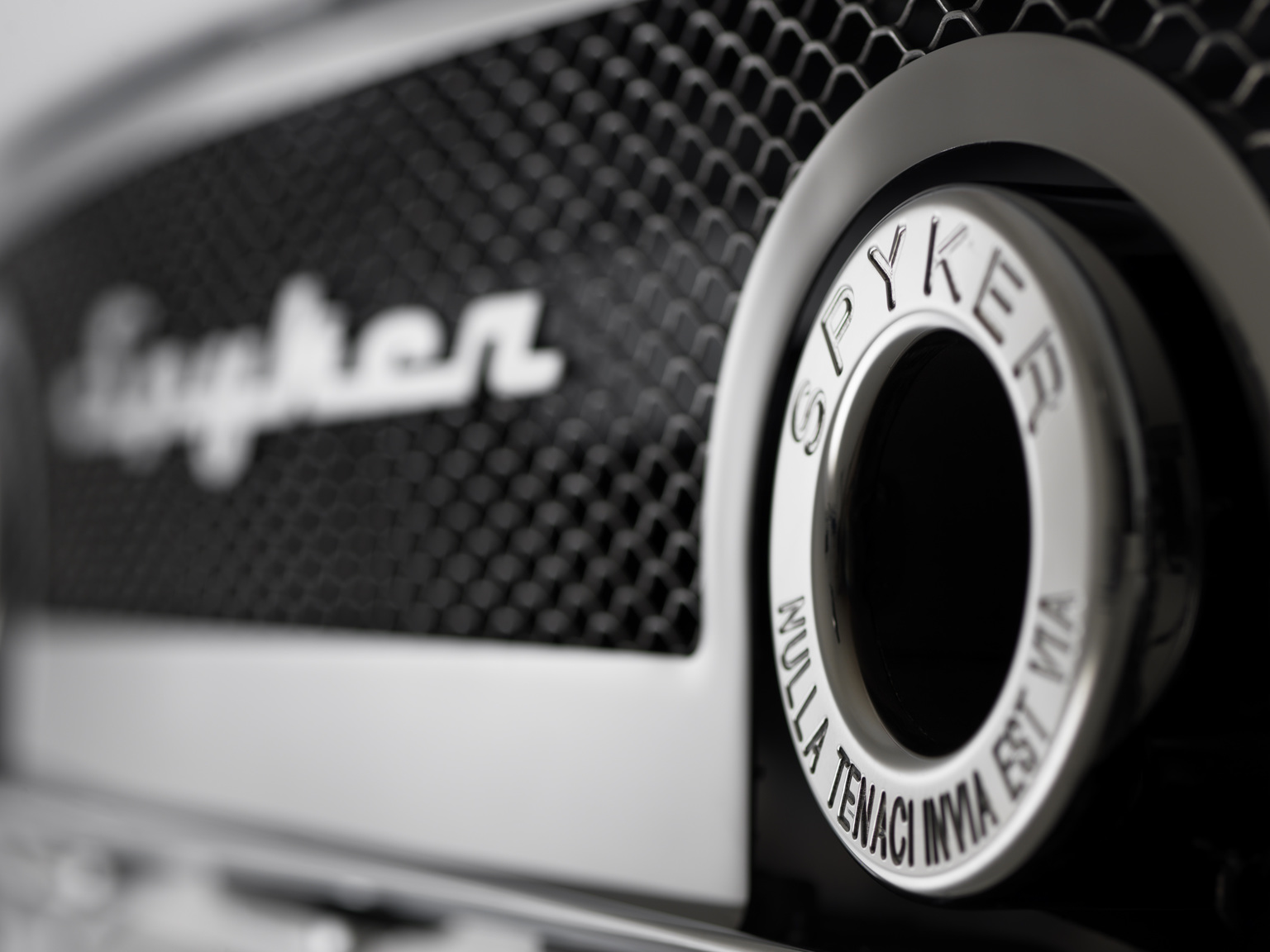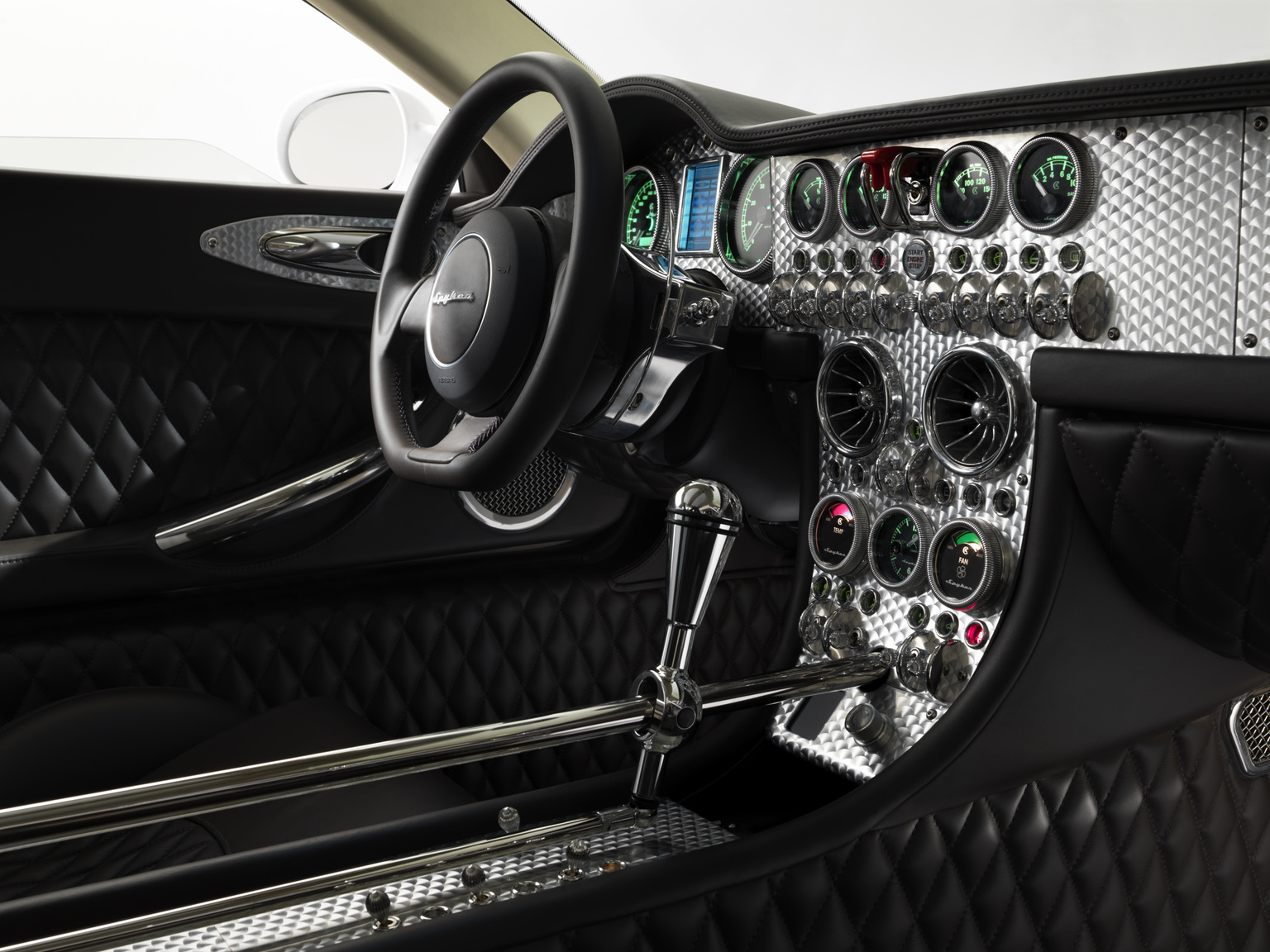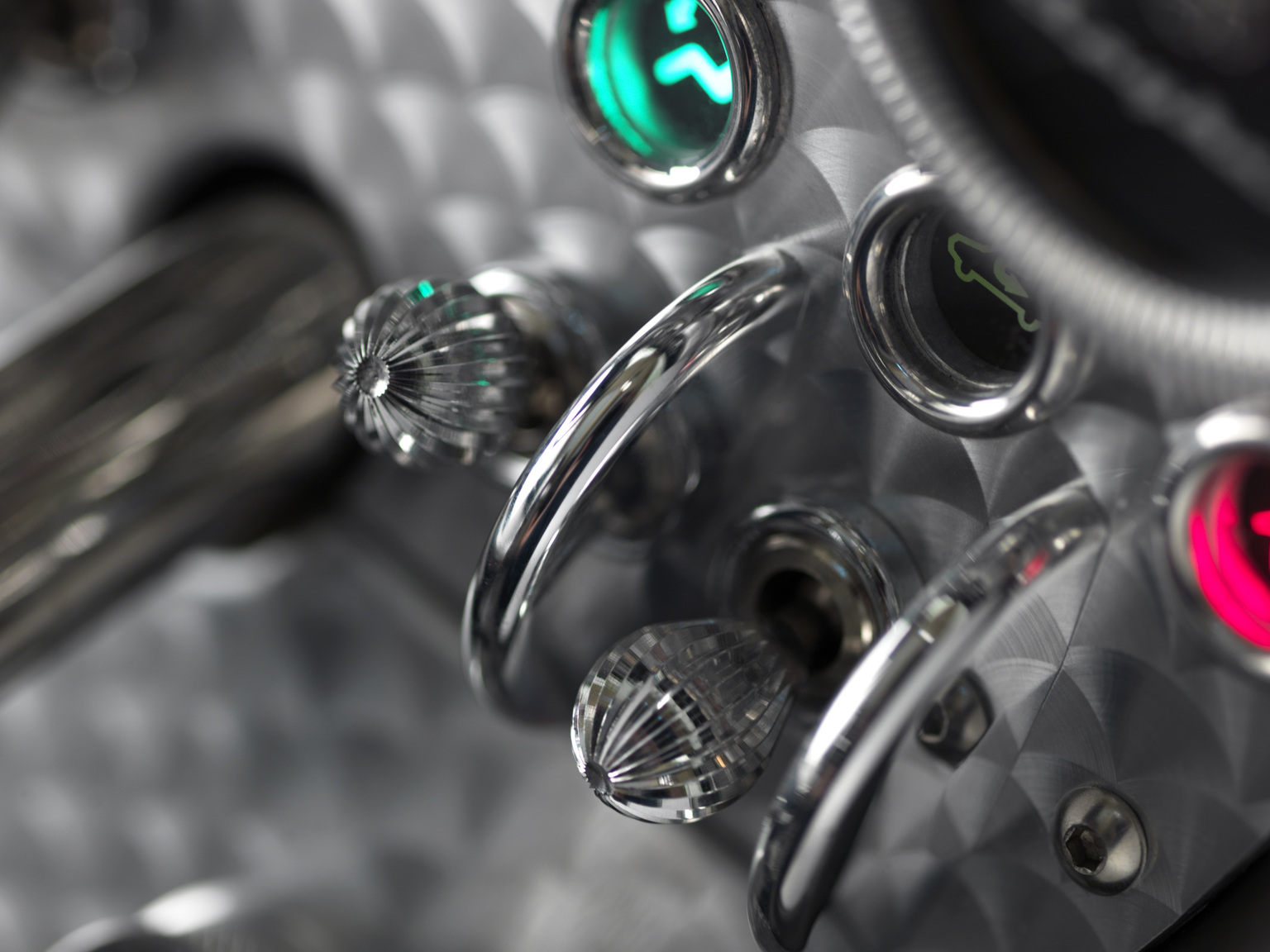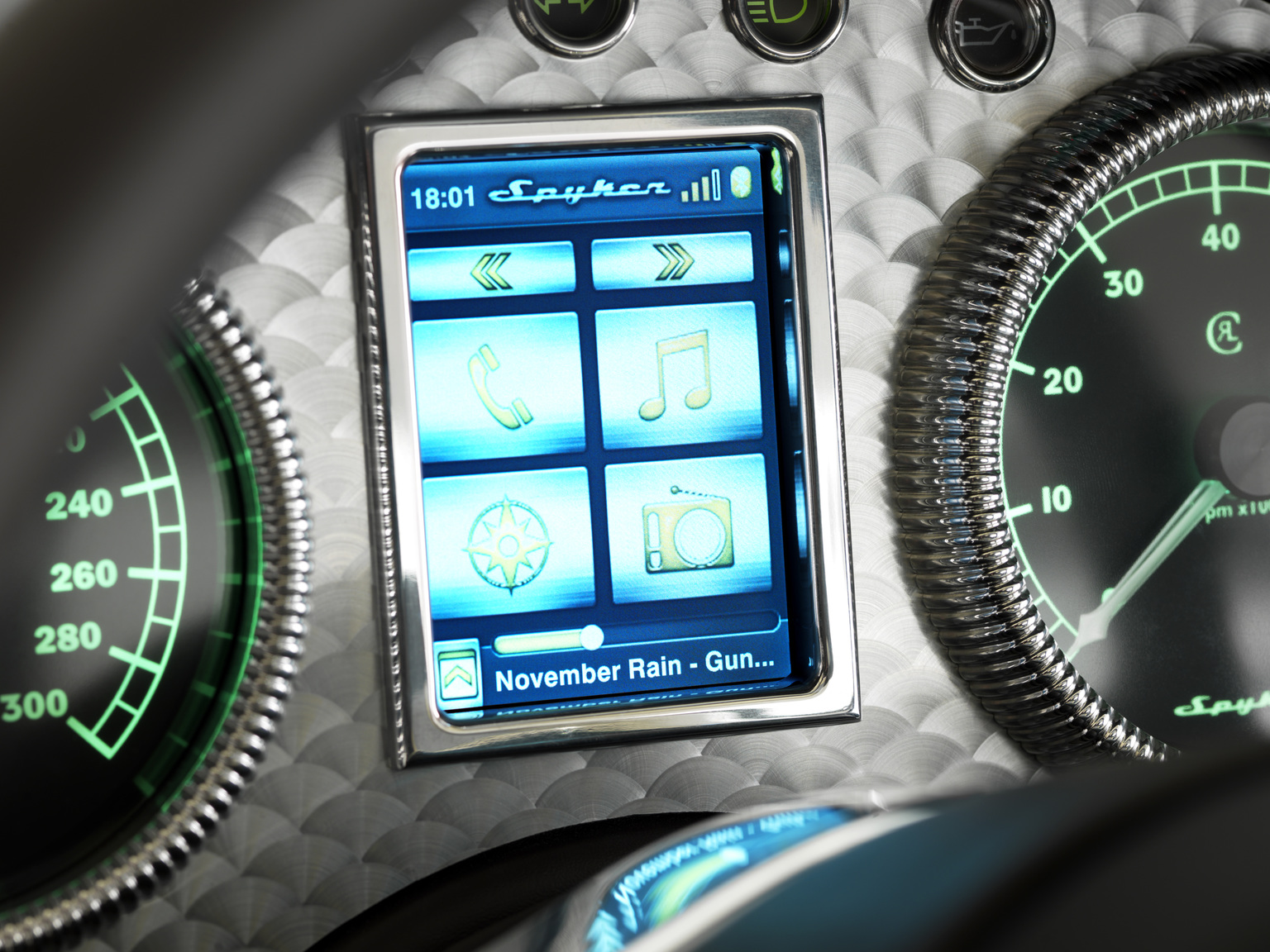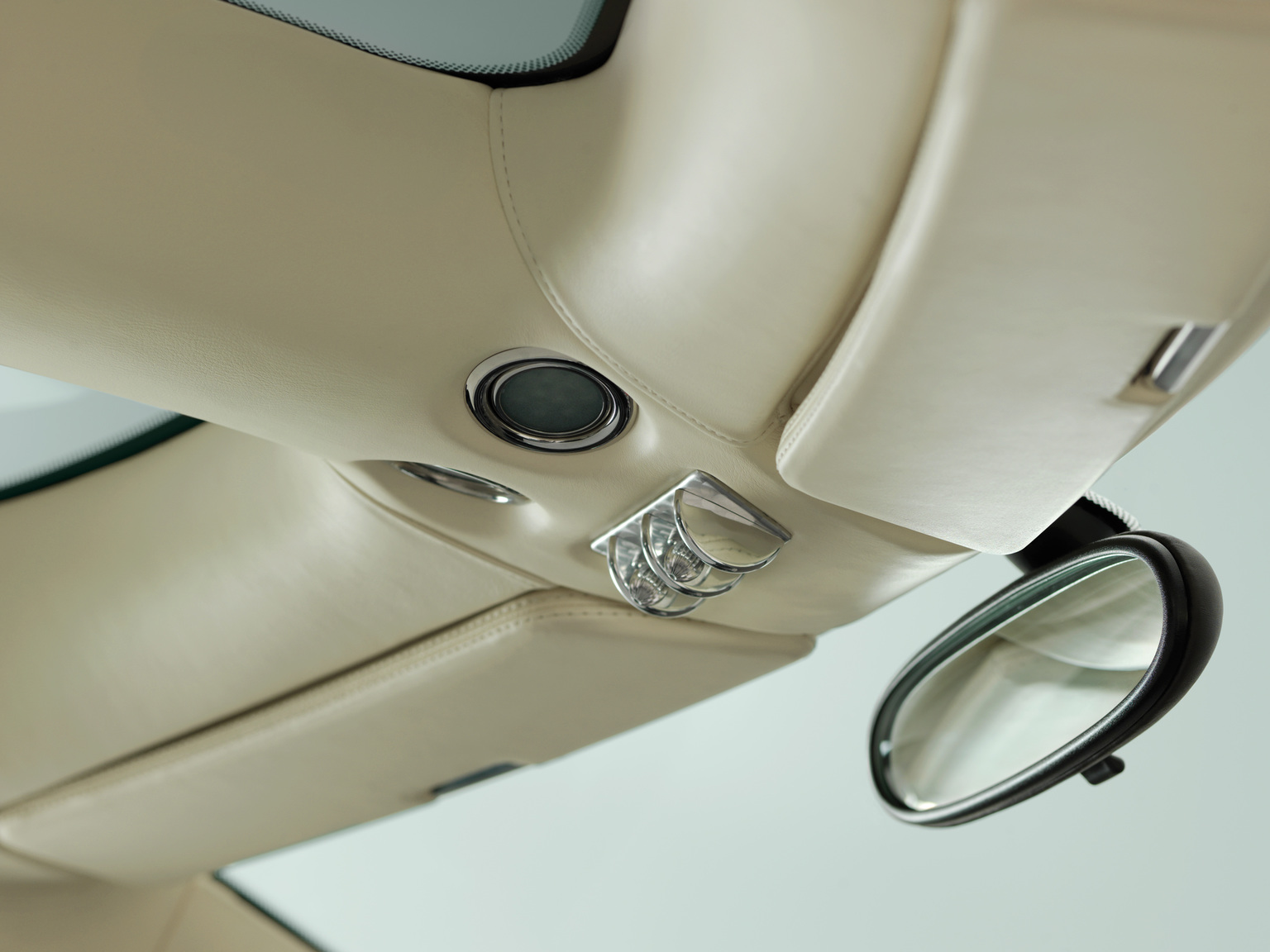2009 Spyker C8 Aileron
The C8 Aileron represents the second generation of Spyker sports car with several distinctions from the first. Most notably, the car has increased in size to adapt better to the American market.
Furthermore, final production was moved from Zeewolde, Holland to Conventry UK to take advantage of the many specialist firms including Coventry Prototype Panels who manufacture all of Spykers bodies and chassis.
Like the old car, the engine is sourced from Audi’s 4.2l V8 40v which is highly adaptable to tuning and twin turbocharging.
Press Release.
Zeewolde, the Netherlands, 3 March 2009 – Spyker Cars, manufacturer of exclusive premium sports cars since 2000, today proudly introduces the production version of its all-new second-generation sports car: the Spyker C8 Aileron, the prototype of which was shown at Geneva in 2008.\
Victor R. Muller, Spyker Cars’ founder and Chief Executive Officer said on the occasion of the unveiling: “When we unveiled the C8 Aileron prototype here last year, we wanted to make a clear statement to the industry that Spyker was about to take the next step in its short but intense history, by introducing its second-generation sports cars, developed from scratch. Within a year we transformed that prototype into the production-ready car we show here today. The first cars are being built now with customer production and deliveries starting in May 2009.
The C8 Aileron’s design is heavily inspired by Spyker’s aviation heritage, as was the case with all previous models, but with a clear emphasis on the second-generation aircraft propulsion: the turbine rather than the propeller that adorned so many elements of the first-generation cars. Similarly the “Aileron” name pays tribute to that aviation heritage.
It is the device that makes an aircraft turn and symbolizes the turning point that the Aileron is for Spyker: the car which will turn the company towards long-awaited profitability.”
All-Aluminium Space frame Chassis
The Spyker C8 Aileron’s all-aluminium space frame was completely redesigned from scratch with the
objective to increase torsional rigidity and to incorporate an all-new suspension system. These
characteristics provide an ideal foundation for enhanced vehicle dynamics.
Moreover, the C8 Aileron’s dimensions have been optimised for more interior space and to
accommodate the optional automatic gearbox. Compared to the short wheelbase of the firstgeneration cars – the Spyker C8 Laviolette and C8 Spyder – the wheelbase of the C8 Aileron is 150 mm longer, also providing for more driving comfort and stability at high speeds. Its front track has increased by 155 mm. The total dimensions of the front and rear track are now 1625 mm and 1645 mm respectively, which improves road handling significantly.
Spyker has put tremendous efforts in the space frame performance of the C8 Aileron, specifically the structure’s efficiency. The utilisation of modern finite element and numerical optimization methods has allowed Spyker’s engineers to arrive at an exceptionally stiff structure of 22.000Nm/degree. Rigidnode and load-path technology has been employed in order to ensure that the minimum amount of aluminium is used to achieve this performance, thus reducing the overall weight of the vehicle. The dynamic stiffness characteristics of the structure have been carefully tuned in order to minimize unwanted cabin noises and vibrations, which may otherwise detract from the driving experience.
These technologies and measures have allowed Spyker to arrive at the most efficient chassis in its history.
Design
The design of the hand-crafted Spyker C8 Aileron represents the latest evolution of Spyker’s signature architecture, which is prominently inspired by the company’s aviation heritage. In the first-generation cars, the propeller design was consistently applied to many elements of the cars. Within the design of the new Spyker C8 Aileron, the emphasis was shifted from the propeller propulsion to the turbine propulsion. As a result, for instance, the bright polished air inlets were converted into turbine-engineshaped air scoops.
In order to enhance the aerodynamic performance of the car, several changes in styling were made,
such as stretching the canopy backwards. Most of the shark-like gills have been abandoned, which
results in a cleaner, smoother appearance. The front end is now characterised by a larger grille that gives additional cooling. Also the rear diffuser was redesigned for improved functionality. An extra spoiler has been placed under the diffuser, providing additional downforce to boost the ground effect
produced by the diffuser.
Sometimes practicality gains over design: the split side windows with the characteristic metal frame have been replaced by single-pane side windows that are fully retractable, improving driving comfort.
The outside mirrors, standard in body colour, were redesigned and the mirror body is mounted on two turbine fan blades.
The rear lights are made of LEDs (light-emitting diodes). LED lights were also used for the indicators and the sidelights in the redesigned headlight units. The style of the headlights is particularly eyecatching as they follow the body design more closely. This characteristic styling can be defined as a part of the (future) Spyker identity first seen on the Spyker C12 Laturbie and subsequently in the Spyker D8 Peking-to-Paris. In fact, the latter will use the identical headlight units to those of the
Aileron.
The C8 Aileron is available in 16 standard colours, but customers may choose any colour they wish as an option, as well as the Spyker Squadron GT2 colour scheme. The standard colours have been
developed by Sikkens Autolakken Nederland and AkzoNobel Car Refinishes. Spyker selected these
companies because of their high quality standards and their flexibility to meet with special
requirements. Some of the standard colours have been created especially for the C8 Aileron.
Power train
The Spyker C8 Aileron will use the Audi 4.2 litre V8 engine, giving 400 bhp and will be available with two transmission alternatives. The first one is a 6-speed Getrag manual gearbox, with ratios perfectly matched to the V8 engine. This is joined by a ZF 6-speed automatic gearbox, which comes standard with paddle shifts behind the steering wheel, to progress smoothly through the ratios. Both transmissions retain Spyker’s trademark exposed gear change mechanism.
Interior
Thanks to the longer chassis, the Spyker C8 Aileron has more interior space, which results in a higher comfort level and improved ergonomics. The interior, with its typical attention to detail, is made of the highest quality leather, from the Litano range of the Dutch Royal Tannery Hulshof. The leather interior is available in 14 standard colours, but any other colour – if desired by the customer – can be ordered
as an option.
Driver and passenger sit low, close to the car’s centre of gravity, where they can feel the car reacting to the input of the driver, for a direct and sporting connection between car and driver.
The dashboard was completely redesigned to suit the new Spyker identity and to improve ergonomics
and functionality. Air vents are designed in turbine style and the performance distribution of the air conditioning was improved significantly. A multifunctional LCD display is integrated between thespeedometer and the odometer. The middle console accommodates the standard Kharma sound system (see In-Car Entertainment). Chronoswiss dials and switches are available as an option.
More space was created around the Spyker characteristic floor-mounted pedal box. The impression of professional functionality and ergonomic styling is enhanced by the optimised positioning of the door handle and the hand-brake lever.
In-Car Entertainment
With larger numbers of cars going into the market and the increased popularity of the iPod and similar products, the demand for a standard sound system fitted by the factory increased. As a result, every Spyker C8 Aileron will be equipped as standard with a Kharma sound system, incorporating a digital radio, Bluetooth interface, an iPod connectivity and a navigation system. The Kharma sound system offers joystick controls on the central console and a dashboard display, paired to 6 Kharma loudspeakers. It can be extended with two optional audio packages.
The presence of a Kharma sound system in the Spyker C8 Aileron marks Kharma’s debut in the world of automotive entertainment. Kharma International produces high-end audio products and sells worldwide through a network of highly qualified distributors and dealers. All sound systems are developed, assembled and tested in the Netherlands, with the utmost care by a team of highly engaged specialists. These characteristics of high-quality products and exclusiveness are in line with Spyker’s brand values craftsmanship and exclusivity.
Suspension & Wheels
The C8 Aileron is fitted with a brand-new front and rear independent double-wishbone suspension
system. The new suspension system includes a new kinematic layout of the front and rear suspension,
front and rear stabilizer bars, mono-tube dampers, coil over damper steel springs, anti-dive and antisquat setup for improved handling properties. The suspension components are made of forged aluminium where possible, to keep the vehicle’s unsprung weight as low as possible. Shock absorbers are now placed vertically within the wishbones.
The Aeroblade™ wheels of the first-generation cars are replaced by newly-designed 19-inch alloy
wheels. New 10-blade, 19-inch directional rotor wheels, branded Rotorblade™, are available as an
option. These wheels are inspired by the turbine blades of a jet engine, which hints the new styling direction while respecting the aviation heritage. The 235/35 size tyres at the front and up to 295/30 at the rear provide the necessary road holding.
Brakes
Brakes are supplied by AP Racing, a partner from day one. Black brake calipers with Spyker script are standard. Colour-coded calipers with Spyker script can be ordered as an option. Carbon ceramic
brakes will be available as an option soon.
In Detail
| type | Series Production Car |
| released at | 2009 Geneva Motor Show |
| built at | Coventry, England |
| coachbuilder | Coventry Prototype Panels |
| price $ | $ 225,000 |
| engine | Audi 4.2 40v 90º V8 |
| position | Mid, Longitudinal |
| aspiration | Natural |
| ignition | Bosch Motronic ME 7.1.1 |
| block material | ALUSIL Aluminium-Silicon Alloy w/Silicon Crystal Liners |
| valvetrain | Chain-Driven DOHC, 5 Valves per Cyl w/Variable Intake Manifold |
| fuel feed | Multi-Point Electronic Indirect Fuel Injection |
| displacement | 4163 cc / 254.04 in³ |
| bore | 84.5 mm / 3.3 in |
| stroke | 92.8 mm / 3.7 in |
| compression | 11.0:1 |
| power | 298.3 kw / 400 bhp @ 6800 rpm |
| specific output | 96.08 bhp per litre |
| bhp/weight | 271.19 bhp per tonne |
| torque | 480 nm / 354 ft lbs @ 3500 rpm |
| redline | 7200 |
| body / frame | Aluminum Body ober Aluminum Spaceframe |
| driven wheels | RWD |
| wheel type | Bright Silver alloy |
| front tires | 235/35ZR19 |
| rear tires | 295/30ZR19 |
| front brakes | AP Discs w/4-Piston Calipers, ABS, EBD |
| rear brakes | AP Discs w/4-Piston Calipers, ABS, EBD |
| front wheels | F 48.3 x 21.6 cm / 19 x 8.5 in |
| rear wheels | R 48.3 x 24.1 cm / 19 x 9.5 in |
| f suspension | Aluminum Wishbones |
| r suspension | Aluminum Wishbones |
| curb weight | 1475 kg / 3252 lbs |
| weight distro | 46 % / 54 % |
| wheelbase | 2725 mm / 107.3 in |
| front track | 1625 mm / 64 in |
| length | 4617 mm / 181.8 in |
| width | 1952 mm / 76.9 in |
| height | 1270 mm / 50 in |
| transmission | 6-Speed Getrag Transaxle or ZF Automatic |
| top speed | ~300.88 kph / 187 mph |
| 0 – 100 kph | ~4.5 seconds |
| city fuel econ epa | 13 L/100 km or 18.09 mpg-us |
| hwy fuel econ epa | 18 L/100 km or 13.07 mpg-us |
| fuel capacity | 57 litres or 15.05 gal. |


